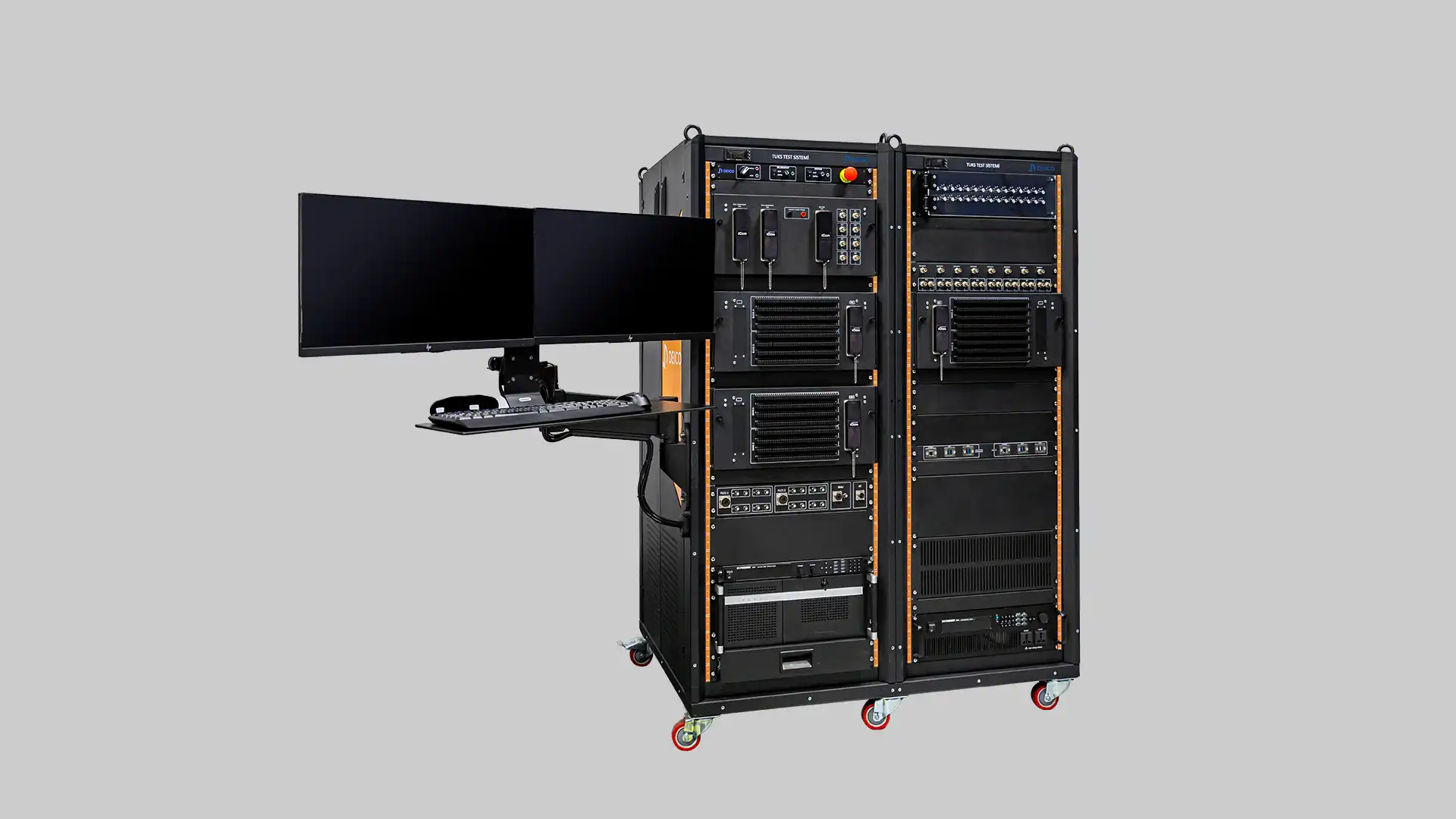Project Overview
Project Objective
The main goal of the project is to ensure the safety and performance of a fighter jet’s Flight Control Unit (FCU) by replicating hazardous flight scenarios in a controlled lab environment—scenarios that cannot be safely tested in live operations.
Target Platform and Industry
This solution is tailored for:
- Flight Control Units (FCUs)
- Mission computers
- Other critical avionics components in military and civilian fixed-wing aircraft
Industries: Aerospace, Defense
Scope and Functionality
This project involves hardware-in-the-loop (HIL) testing of a physical FCU. By integrating the unit with a real-time simulation system, the setup enables safe performance validation under simulated extreme flight conditions. It supports iterative debugging, input manipulation, and hardware-in-the-loop ironbird simulations.

Technical Specifications
System Capabilities
- Real-time simulation of complete aircraft dynamics and subsystems
- Injection of electrical faults across I/O channels for safety-critical validation
- Full monitoring and simulation of avionics communication buses (e.g., MIL-STD-1553B)
- Signal generation and measurement: analog, discrete, VDT, solenoid
- Electrical conditioning of all I/O channels to reflect real aircraft parameters
- High-reliability mass interconnect interface for quick test setup
- Automated self-test and self-calibration functions
- Intuitive GUI for automated test execution, data monitoring, and reporting
Standards, Protocols, and Compatibility
- PXI & SLSC Modular Architecture
- Full support for MIL-STD-1553B communication standard
DEICO Modules Used
- SLSC modules: DE9001, DE9003, DE9006, DE9100
- 1553 Bus Coupler
- Custom breakout box

Project Value and Impact
Why This Project Matters
This HIL test rig plays a critical role in validating flight control systems under risky conditions that cannot be recreated during real-world flights. It enhances safety assurance without operational risk.
Customer and Industry Benefits
The platform dramatically shortened the development and certification cycle for the FCU. It also reduced costs and eliminated risks associated with live aircraft testing, providing a highly controllable and reusable test environment.
